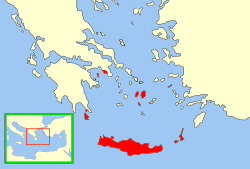Revolt of the Arrabal
This article needs additional citations for verification. (January 2024) |
| Revolt of the Arrabal | |||||||
|---|---|---|---|---|---|---|---|
 Roman bridge of Córdoba with the mosque and city in the background. View taken from the shore of the Guadalquivir River where the suburb of Saqunda was located. | |||||||
| |||||||
| Belligerents | |||||||
| Citizens of the suburb of Saqunda | | ||||||
| Commanders and leaders | |||||||
| Issa bin Dinar Yahya ibn Yahya al-Laythi | Al-Hakam bin Hisham Obaidullah Al-Balansi Abdul Karim bin Mugheeth | ||||||
The Arrabal Revolt took place in the suburb of Saqunda of the city of Córdoba, capital of the Emirate of Córdoba, in the spring of the year 818, coinciding with Ramadan, during the government of Emir al-Hakam I. The revolt aimed to expel the Umayyads from the city of Córdoba, but it failed and was harshly repressed by the emir.[1][2][3]
Background
[edit]The city of Cordoba was converted by the Muslim conquistadors, who in 711 had put an end to the Visigothic Kingdom of Toledo, into the new capital of their state, which caused a great growth in its population that soon overflowed the walled enclosure of Roman Hispania. Thus, several suburbs grew, among which Saqunda stood out, located on the other side of the Guadalquivir River in front of the mosque of Cordoba and the fortress, and inhabited by artisans and merchants.
"Secunda was a neighbourhood with diaphanous streets, which led to squares equipped with water wells and whose inhabitants used the pebbles dragged by the river to build their houses"
—Manzano Moreno
In 796, Al-Hakam I succeeded his father Hisham I as head of the Independent Emirate of Cordoba. Some sources portray Al Hakam I as a bloodthirsty despot – he ordered the crucifixion of all those involved in a conspiracy against his rule – and, on the other hand, he decreed the increase of taxes which provoked rebellions against the authority of the Umayyads in some cities such as Mérida and Toledo. There were also signs of discontent in the capital itself, provoked not only by the increase in tax levies but also by his conduct. He was accused of impiety and of being more concerned with wine than with prayer. In fact, there were some riots in which the prefect of the city almost perished and which resulted in the upside-down crucifixion of one of the agitators. [4]
The revolt
[edit]The reason that triggered the revolt was an altercation between a guard of the emir and an artisan in which he was killed. The mutineers headed to the bridge over the Guadalquivir that linked the city with the suburb with the aim of taking the fortress. They managed to cross it and attacked the wall, concentrating on the Puerta del Puente. The emir's soldiers came to defend that gate but were soon overwhelmed by the arrival of people from the interior of the city and other suburbs who joined the revolt. Only a clever stratagem by a Qadi in the service of the emir managed to save the situation. With a group of horsemen he left through another gate of the city and headed to the suburb of Saqunda, fording the river upstream. His men killed everyone they found in their path and from the suburb they headed to the bridge to cross it and surprise the mutineers from the rear. When they realized the maneuver, they abandoned the siege of the castle and returned to Saqunda. There for several days the emir's troops dedicated themselves to looting and capturing the rebels, until Al-Hakam I granted a truce. As Eduardo Manzano Moreno has pointed out, «the emir was aware of the serious danger he had run. In the victory report that he ordered to be written then, he attacked the rebels, calling them depraved, scoundrels and slaves who had dared to rebel against their legitimate authority.
Consequences
[edit]
The repression ordered by Al-Hakam I was fierce. The suburb was razed and houses were prohibited from being built on the site. "The result of Arrabal's revolt was a complete triumph for al-Hakam. The emir imposed the new taxes on the people of the capital and the Kura (province)".[5]
Emirate of Crete
[edit]The inhabitants of Saqunda who had not died or had not been taken prisoner were forced to leave Córdoba. Some left for Toledo, others emigrated to North Africa, most of them settled in a neighborhood of the newly founded city of Fez[6] thanks to the emir Idrís II. Some exiles arrived as far as Alexandria and took control of the city until 828, when they were expelled by the general Abbasid Abdallah ibn Tahir al-Khurasani, and decided to settle on the island of Crete.[7]
References
[edit]- ^ "Artehistoria - Historia de España - Ficha La Revuelta del Arrabal". artehistoria.jcyl.es. Archived from the original on 29 February 2012. Retrieved 6 January 2024.
- ^ "The Arrabal Revolt. Cronologiahistorica.com". cronologiahistorica.com. Archived from the original on 29 March 2019. Retrieved 6 January 2024.
- ^ Vallvé Bermejo 2003, p. 10.
- ^ Manzano Moreno 2018, p. 145.
- ^ Manzano Moreno 2018, p. 147.
- ^ Manzano Moreno 2018, pp. 146–147.
- ^ Alba, Alfonso (25 September 2017). "The Rbadíes: The story of some expelled Cordobans who ended up founding a kingdom". CORDÓPOLIS, the Digital Newspaper of Córdoba (in European Spanish). Retrieved 27 January 2021.
Bibliography
[edit]- Manzano Moreno, Eduardo (2018). Medieval times. Vol. 2 of the History of Spain, directed by Josep Fontana and Ramón Villares. Second paperback reprint. Barcelona-Madrid. ISBN 978-84-9892-808-2.
{{cite book}}: CS1 maint: location missing publisher (link) - Vallvé Bermejo, Joaquín (2003). Abd al-Rahman III: Caliph of Spain and the West. Barcelona. ISBN 84-344-6682-1.
{{cite book}}: CS1 maint: location missing publisher (link)


 French
French Deutsch
Deutsch